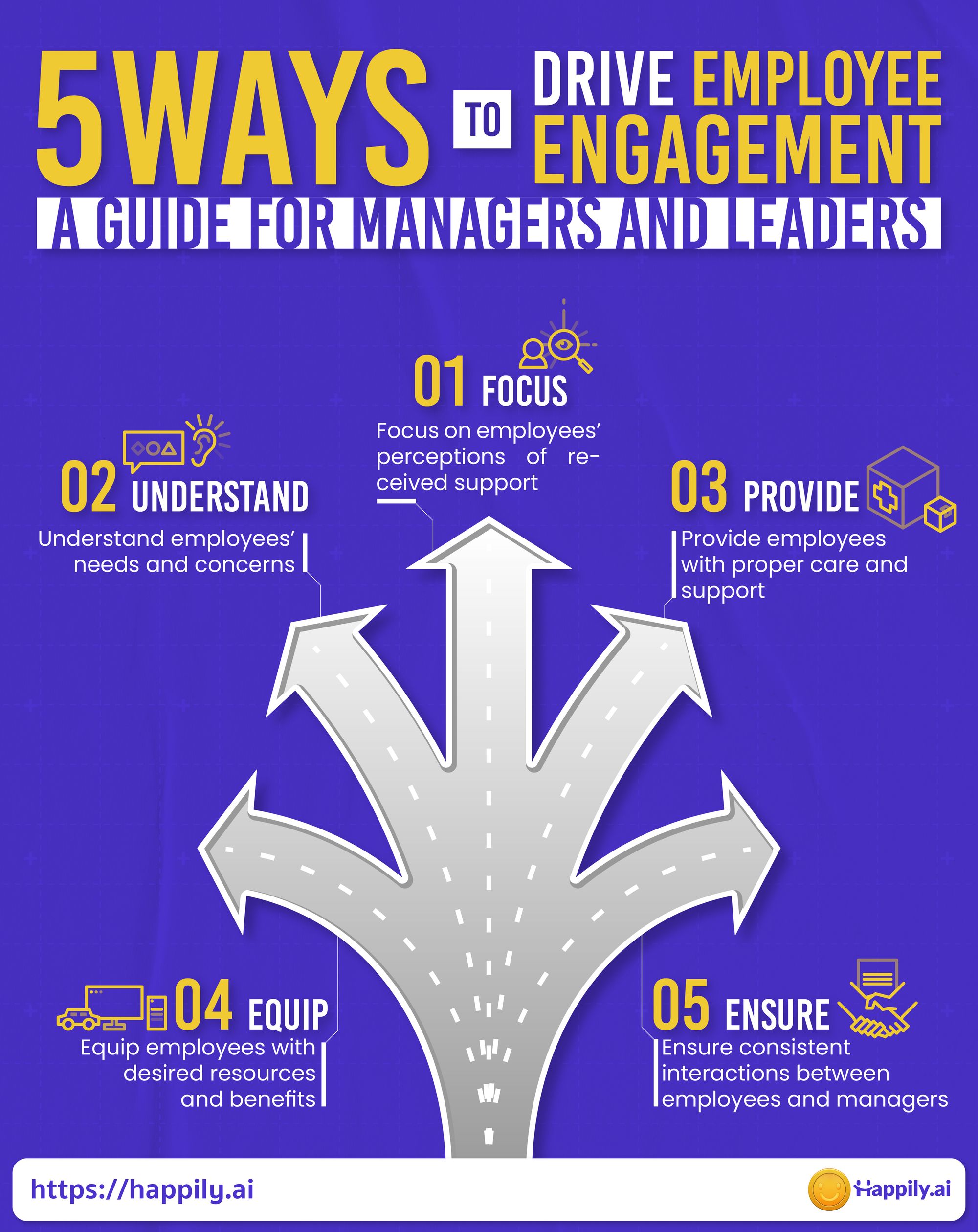“The right people in the right roles with the right managers drive employee engagement.” (First, Break All the Rules, What the World's Greatest Managers Do Differently by Gallup Press)
The term ‘employee engagement’ has become widely used in the people management and business field, but the definition of employee engagement among organizations is still unclear and inconsistent, resulting in confusion and lack of success in implementing employee engagement strategies.
Employee engagement is usually targeted towards HR. However, research has shown that managers account for more than 70% of the variance in employee engagement. This is because managers fill in the roles HR cannot: the roles of personalizing relationships, connecting with, and empowering employees.
To create effective strategies that promote employee engagement, organization leaders and managers should have an in-depth understanding of the concept of employee engagement.

The evolution of employee engagement
The idea of engagement began with the work of Kahn (1990), proposing three psychological conditions associated with engagement: meaningfulness, safety, and availability. Kahn is considered the academic parent of employee engagement, as his work on engagement has been influential to later researchers. However, the term ‘employee engagement’ only came into use in the year 1999 in the book called First, Break All the Rules, What the World's Greatest Managers Do Differently by Gallup.
Due to the impact of positive psychology, Maslach et al. (2001) later defined employee engagement as the positive antithesis to burnout, providing more emphasis on positive drivers to work like engagement, rather than negative ones like burnout. They found six areas of work-life which predict engagement: workload, control, rewards and recognition, community and social support, perceived fairness, and values. The recognition of these six areas broadens the range of intervention options for organizations to implement when targeting employee engagement issues.
Harter, Schmidt, and Hayes (2002) later published one of the earliest and most definitive pieces of literature on employee engagement, adding the influence of expectation of an individual’s satisfaction level on previous models of employee engagement. This significantly altered the way engagement has been viewed. Not long after, Saks (2006) came up with the first empirical research to conceptualize and test antecedents and consequences of employee engagement through Social Exchange Theory (SET).
A shipping company using Happily was able to resolve critical alignment and engagement issues immediately. When the pandemic hit, the company leader announced new policies requiring employees to work harder (multiple workstreams) to survive. The leader focused on creating new opportunities to ensure that they did not have to terminate a single employee. Employees, however, did not understand why more work didn't come with additional pay.
By working with Happily, the Insights dashboard helped the managers see the gap in employee expectations. This inspired discussions and participation that led to a new shared understanding, which aligned the company.
Outcome: Increased Productivity.
The Relationship between Social Exchange Theory (SET) and employee engagement
According to the framework of Social Exchange Theory (SET), employees engage as a return to the economic and socioemotional resources received from the organization. These resources include the 3 psychological conditions associated with engagement proposed by Kahn (2010) and the 6 areas of work-life found by Maslach et al. (2001) to predict engagement. In short, the amount of resources an individual is willing to devote to their performance is dependent on the perceived resources employees believe they received from the organization.
Why is employee engagement important?
Employee engagement is directly related to individual and organizational performance and positive organizational outcomes, including employee retention, productivity, profitability, customer loyalty, and safety. Engaged employees are likely to stay longer in their jobs, yield higher productivity, drive higher customer satisfaction, and exert extra time and effort to contribute to the success of the organization.
With a better understanding of employee engagement, organization leaders and managers can create strategies that effectively promote employee engagement in the workplace.
According to the fundamentals of employee engagement, leaders and managers should:
- Focus on employees' perceptions of support they receive from their organization
- Understand employees' needs and concerns
- Provide employees with the care and support they need
- Observe what resources and benefits are most desired by employees.
- Understand that employee engagement is an ongoing process that requires consistent interactions between employees and managers

Conclusion
Employee engagement is essential in creating positive organizational outcomes in every workplace. Companies that encourage employee engagement produce committed employees who devote their time and effort to the organization’s success.
At Happily.ai, we help companies by promoting employee engagement through real-time engagement surveys and employee engagement platform by providing managers and leaders with daily insights into employees’ needs and concerns. To engage your people now, visit us at Happily.ai.

References:
[1] Buckingham, M. and Coffman, C. (1999), First, Break All the Rules: What the World's Greatest Managers Do Differently, The Gallup Organization, Simon & Schuster, New York, NY.
[2] Harter, J.K., Schmidt, F.L. and Hayes, T.L. (2002), “Business‐unit level relationship between employee satisfaction, employee engagement, and business outcomes: a meta‐analysis”, Journal of Applied Psychology, Vol. 87 No. 2, pp. 268‐79.
[3] Kahn, W.A. (1990), “Psychological conditions of personal engagement and disengagement at work”, Academy of Management Journal, Vol. 33 No. 4, pp. 692‐724.
[4] Leiter, M. P., & Maslach, C. (2015). Job burnout. Wiley Encyclopedia of Management, 1–2. https://doi.org/10.1002/9781118785317.weom110006
[5] Maslach, C., Schaufelli, W.B. and Leiter, M.P. (2001), “Job burnout”, Annual Review of Psychology, Vol. 52, pp. 397‐422.
[6] Saks, A.M. (2006), “Antecedents and consequences of employee engagement”, Journal of Managerial Psychology, Vol. 21 No. 7, pp. 600‐19.
[7] Shuck, B., & Wollard, K. (2009). Employee engagement and HRD: A seminal review of the foundations. Human Resource Development Review, 9(1), 89–110. https://doi.org/10.1177/1534484309353560
[8] Welch, M. (2011). The evolution of the Employee Engagement Concept: Communication Implications. Corporate Communications: An International Journal, 16(4), 328–346. https://doi.org/10.1108/13563281111186968
[9] https://www.insperity.com/blog/employee-engagement/
[10] http://citeseerx.ist.psu.edu/viewdoc/download?doi=10.1.1.466.1591&rep=rep1&type=pdf
[11] https://hbr.org/2021/10/5-things-high-performing-teams-do-differently









